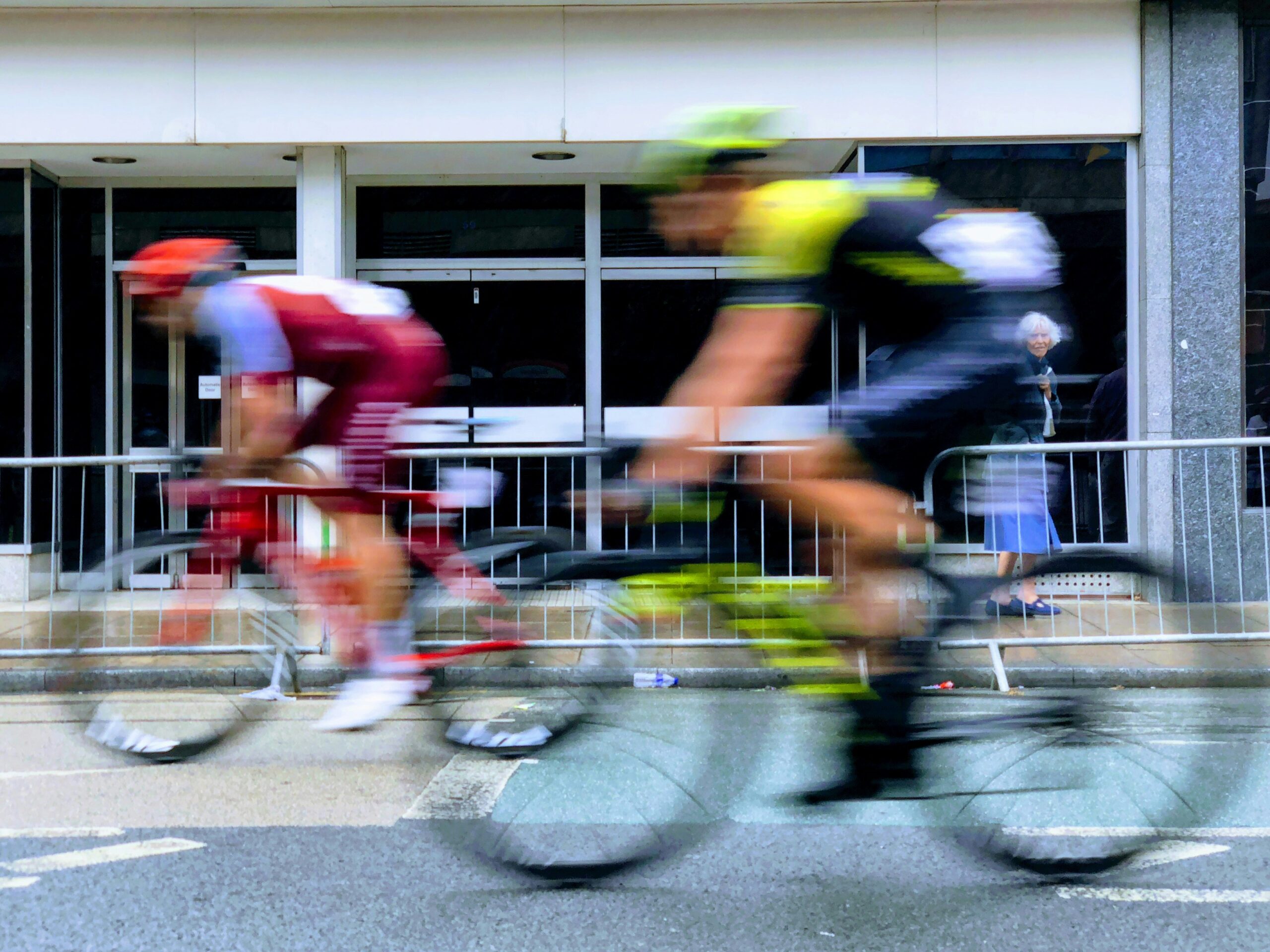Sprinting is one of the most exhilarating aspects of cycling, combining power, speed, and precision. Whether you’re training for a race or simply looking to improve your explosive strength and technique, sprinting drills are a valuable addition to your cycling routine.
This post delves into two specific sprint types—Form Sprints and Race Sprints—detailing their purpose, execution, and integration into your training plan.
The Importance of Sprint Training
Sprint training offers several benefits that go beyond just raw speed. Firstly, it enhances your ability to generate maximum power in short bursts, which is crucial for race-winning moves or gaining an advantage during group rides.
Additionally, practicing sprints refines pedaling efficiency, body positioning, and bike handling under high-intensity conditions, improving your overall cycling technique.
Furthermore, sprints engage your anaerobic energy system, which boosts your ability to handle high-intensity efforts and recover quickly.
Form Sprints: Building Technique and Control
What Are Form Sprints?
Form sprints are designed to focus on technique rather than raw power or competition. They help cyclists perfect pedaling form, body position, and cadence while building a foundation for higher-intensity sprinting.
When to Practice Form Sprints
Form sprints are most effective when performed during training periods such as Base 3, Build 1, Build 2, Peak, and Race. It’s best to perform these early in a ride when your legs are fresh, as this allows you to prioritize quality over quantity.
How to Perform Form Sprints
To begin, choose a slight downhill or a section with a tailwind to perform your form sprints. This terrain allows you to achieve high speeds with less effort, emphasizing smoothness rather than brute force. Each session should include 6–10 sprints, each lasting about 15 seconds, followed by a 5-minute recovery.
During the first 10 seconds of the sprint, stand on the pedals and focus on running smoothly and generating power. For the final 5 seconds, transition to a seated position while maintaining a high cadence.
The intensity for form sprints should be kept in Zone 5b for power or rate of perceived exertion (RPE), as heart rate is not a reliable measure for such short efforts. These sprints are best practiced alone to avoid the temptation to compete and instead focus solely on refining your form.

Race Sprints: Pushing the Limits
What Are Race Sprints?
Race sprints simulate the intensity and tactical challenges of sprinting in a competitive setting. These sprints focus on delivering maximum effort while applying sprinting techniques under pressure.
When to Practice Race Sprints
Race sprints are ideal during training periods such as Build 1, Build 2, Peak, and Race. You can incorporate them within longer aerobic rides to add intensity and variety to your training sessions.

How to Perform Race Sprints
To replicate race scenarios, choose sprint targets such as road signs or landmarks. These serve as sprint primes, adding a tactical element to your training. Perform 10–15-second sprints during your ride, allowing at least 5 minutes of recovery between efforts to maintain maximum intensity. During the sprint, employ the same mechanics as form sprints: start by standing on the pedals to initiate the sprint and then transition to seated pedaling to sustain power and cadence. Engage your entire body to maximize force while maintaining control of the bike.
For race sprints, push your effort level to Zone 5c for power or RPE. Similar to form sprints, heart rate is not a reliable gauge for these short, explosive efforts. Practicing with a partner or group can further simulate competitive scenarios, allowing you to experiment with positioning, drafting, and timing.
Key Tips for Effective Sprint Training
Focusing on proper form is critical when sprinting. Keep your upper body stable to avoid wasting energy, and ensure you pull up on the pedals during the upstroke for a smooth, circular pedaling motion. To optimize your body position, stay low and aerodynamic by tucking your elbows and engaging your core, while keeping your head up for situational awareness. Gearing also plays a significant role—start in a gear that allows quick acceleration, then shift smoothly to maintain an optimal cadence and power output.
Progression is another vital aspect. Begin with form sprints to build technique and confidence, and transition to race sprints as you gain strength and skill. To track your performance and identify areas for improvement, consider using tools like a power meter or cadence sensor.
Common Mistakes and How to Avoid Them
One common mistake is starting in too hard a gear, which can hinder quick acceleration and disrupt smooth pedaling. Instead, opt for a moderate gear to start, then shift as needed.
Another issue is leaning too far forward, which can overload the front wheel and reduce traction and control. Aim to distribute your weight evenly between the front and rear wheels for stability.
Recovery is often overlooked but is essential for maintaining sprint quality. Ensure you stick to the recommended 5-minute recovery between efforts.
Additionally, avoid over-competing during training. While it’s tempting to race every sprint with a partner, this can compromise your technique. Focus on personal improvement, even in group settings.


Integrating Sprints Into Your Training Plan
In the Base Phase, incorporate form sprints 1–2 times per week to establish solid technique. During the Build Phase, alternate between form and race sprints to develop power and tactical skills. In the Peak and Race Phases, prioritize race sprints to sharpen your competitive edge.
To effectively combine sprints with other workouts, include them within aerobic rides or after an endurance session. Avoid pairing sprints with high-volume or intense training days to maintain freshness and maximize performance.
Final Thoughts
Sprinting is as much about technique and control as it is about power and speed. By mastering form sprints, you build the foundation for smooth, efficient pedaling and bike handling. Transitioning to race sprints allows you to test these skills under high-intensity, competitive conditions.
Whether your goal is to outpace a rival in the final meters of a race or simply add excitement to your rides, sprint training is a rewarding addition to any cyclist’s regimen.
Ready to take your sprints to the next level? Hit the road, stay focused, and enjoy the thrill of the chase!


Leave a Reply